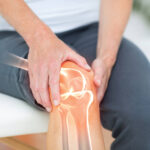When it comes to monitoring our health, we often think of regular doctor visits, blood tests, or even keeping an eye on our weight and diet. However, one of the most overlooked indicators of our health is right at our fingertips – our fingernails. They are, in fact, remarkably telling windows into your overall health. Changes in the color, texture, or shape of your fingernails can be subtle alerts from your body, hinting at everything from nutritional deficiencies to potentially serious medical conditions.
In this article, we will explore 10 specific changes in your fingernails that you should be attentive to. We’ll dive into what each symptom might signify, the possible underlying causes, methods of diagnosis, and appropriate treatments. Understanding these signs can be key to early detection and management of various health issues, making nail observation an important, yet often neglected, part of health assessments.
The health of your fingernails can reflect a range of conditions, from minor issues that can be easily remedied to indicators of more serious chronic diseases. These changes can be gradual or sudden, and while some may be harmless, others might require immediate medical attention. By familiarizing ourselves with these nail changes, we can gain valuable insights into our internal health. Let’s take a closer look at what your nails might be trying to tell you about your overall health.
1. Yellow Nails
- Symptoms: Nails appear yellowish in color.
- Causes: Can be caused by fungal infection, chronic bronchitis, or even lymphedema.
- Diagnosis and Treatment: Fungal infections are treated with antifungal drugs, while other underlying conditions may require specific treatments.
2. White Spots
- Symptoms: Small white spots on the nails.
- Causes: Often due to minor trauma or zinc deficiency.
- Diagnosis and Treatment: Usually harmless and will grow out; zinc supplements can help if due to deficiency.
3. Clubbing
- Symptoms: Nail and fingertip appear swollen, nails curve downward.
- Causes: Often linked to low oxygen levels in the blood and lung diseases.
- Diagnosis and Treatment: Requires medical evaluation for lung and heart diseases; treatment of the underlying condition is necessary.
4. Spoon Nails (Koilonychia)
- Symptoms: Nails are thin and spoon-shaped or concave.
- Causes: Can indicate iron deficiency anemia or heart disease.
- Diagnosis and Treatment: Blood tests to diagnose anemia, with iron supplements and dietary changes as treatment.
5. Pitting
- Symptoms: Small dents or pits in the nail surface.
- Causes: Common in people with psoriasis or those with connective tissue disorders.
- Diagnosis and Treatment: Treatment of the underlying condition, such as topical treatments for psoriasis.
6. Beau’s Lines
- Symptoms: Horizontal grooves or indentations.
- Causes: Can be caused by severe illness, zinc deficiency, diabetes, or circulatory diseases.
- Diagnosis and Treatment: Identifying and treating the underlying condition is crucial.
7. Nail Separation (Onycholysis)
- Symptoms: Nails separate from the nail bed.
- Causes: Can be caused by infection, injury, or thyroid disease.
- Diagnosis and Treatment: Treatment focuses on the underlying cause; antifungal or antibacterial medications might be required.
8. Terry’s Nails
- Symptoms: Nails appear mostly white except for a narrow pink band at the top.
- Causes: Often associated with liver disease, congestive heart failure, or diabetes.
- Diagnosis and Treatment: Addressing the underlying medical issue is critical.
9. Dark Streaks or Painful Growth
- Symptoms: Dark streaks in the nail or a painful growth under the nail.
- Causes: Can be a sign of melanoma, a serious form of skin cancer.
- Diagnosis and Treatment: Immediate dermatological evaluation is necessary; treatment depends on the cancer stage.
10. Brittle or Cracked Nails
- Symptoms: Nails easily crack or split.
- Causes: Often linked to thyroid disease or due to repeated wetting and drying of the nails.
- Diagnosis and Treatment: Thyroid function tests and skin moisturizers or biotin supplements can help.
Essential Nail Care Routine for Healthy Fingernails and Toenails
Maintaining healthy nails is not just about aesthetics; it’s a crucial part of your overall health care routine. Implementing a consistent nail care regimen can help prevent many of the conditions mentioned earlier and keep your nails strong and healthy. Here’s a straightforward routine to help you care for your fingernails and toenails:
Keep Nails Clean and Dry
- Routine Cleaning: Regularly wash and dry your hands and feet to prevent bacteria, fungi, and other organisms from growing under your nails.
- Avoid Excessive Soaking: Prolonged soaking in water can weaken nails, so limit your soaking time during baths and household chores.
Trim Nails Regularly
- Proper Trimming: Trim your nails straight across, then gently round the tips in a gentle curve. This helps prevent ingrown toenails, especially on your feet.
- Regular Maintenance: Trim your nails regularly to keep them at a manageable length and prevent breakage or snagging.
Moisturize Your Nails
- Hydrate Cuticles and Nails: Apply a moisturizer to your nails and cuticles daily. Dry, brittle nails can be revitalized with oils or hydrating creams.
Minimize Use of Harsh Chemicals
- Gentle Cleaning Products: When using cleaning products, wear gloves to protect your nails from harsh chemicals.
- Limit Nail Polish Remover Usage: Avoid overusing nail polish removers, especially those containing acetone, as they can dry out your nails.
Use Protective Footwear
- Foot Protection: Wear proper footwear in communal areas like pools and locker rooms to avoid fungal infections.
Monitor Nail Health
- Regular Check-ups: Keep an eye on your nail health, looking for changes in color, texture, or shape.
- Professional Manicures/Pedicures: If you opt for professional nail treatments, ensure the salon maintains high hygiene standards.
Eat a Balanced Diet
- Nutrient-Rich Diet: A diet rich in vitamins, proteins, and minerals can significantly improve nail health. Foods high in biotin, such as eggs, nuts, and whole grains, are particularly beneficial for nails.
Avoid Nail Biting or Picking
- Prevent Damage: Refrain from biting your nails or picking at your cuticles, as these habits can damage the nail bed and lead to infections.
Seek Professional Help When Needed
- Consultation for Concerns: If you notice any worrying changes in your nails, such as persistent color changes, swelling, or pain, consult a healthcare provider.
Conclusion: Don’t Ignore Your Nails
While not all nail changes are cause for alarm, they shouldn’t be ignored. If you notice any significant changes in your nails, it’s important to consult with a healthcare provider for a proper diagnosis and treatment plan. Remember, your nails are not just a beauty accessory; they are an important indicator of your overall health. Regularly monitoring any changes in your nails can play a crucial role in early detection and management of potential health issues.








